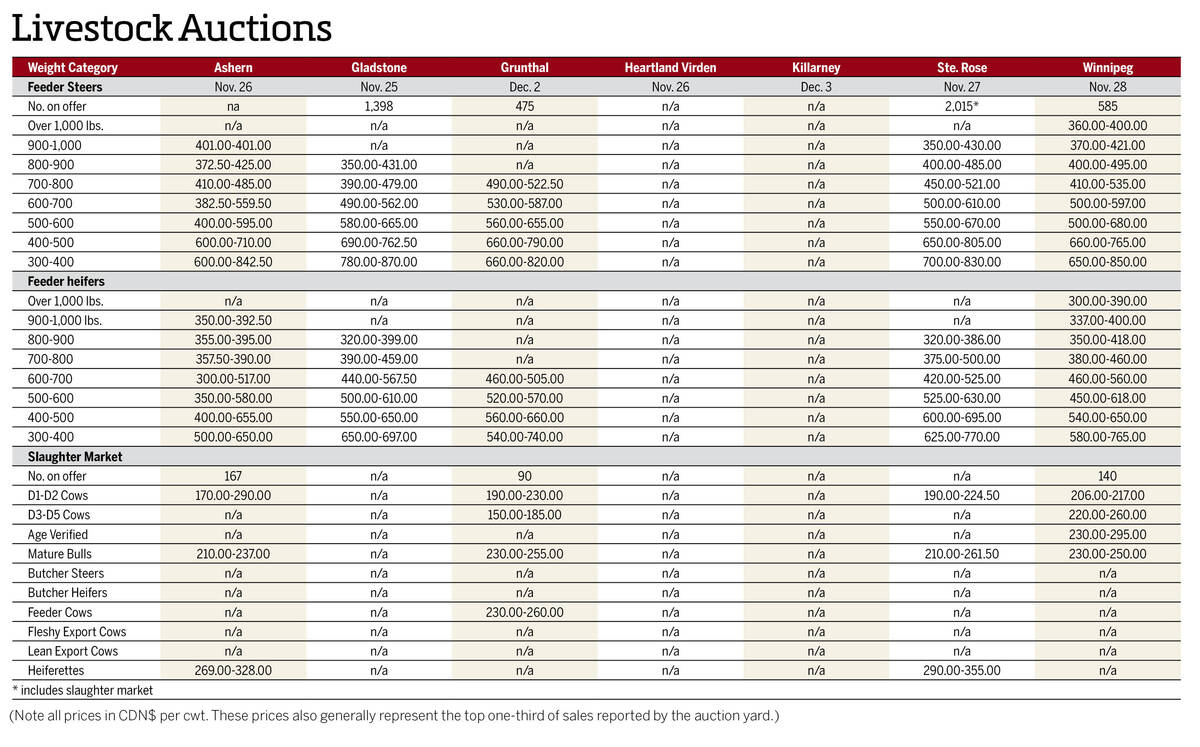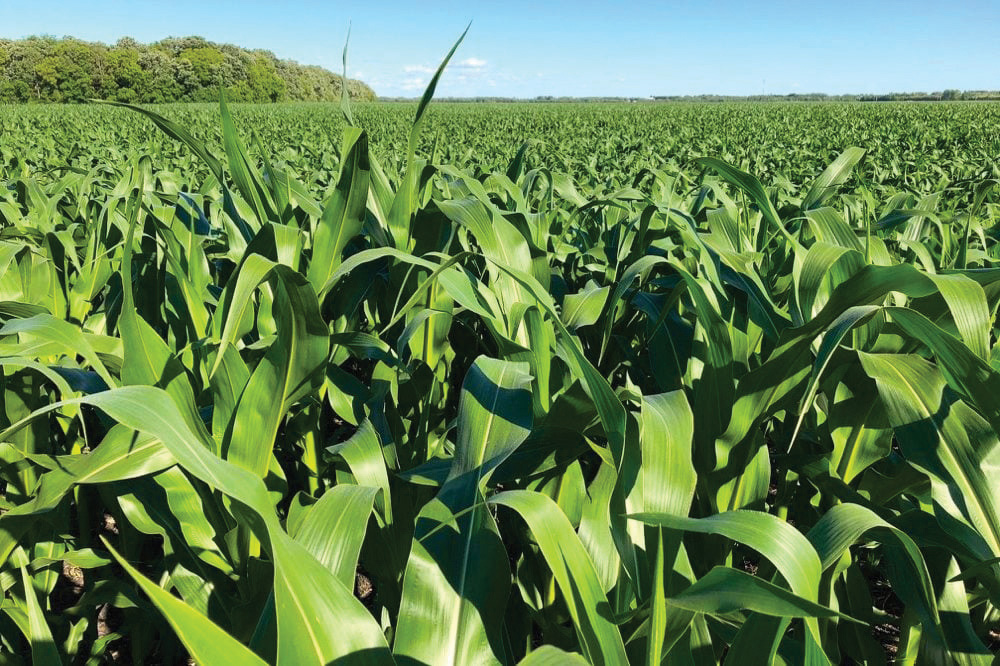Corn appeared to crack under pressure on the Chicago Board of Trade as February came to a close.
Having traded between US$6.70-$6.90 per bushel for much of February, collapses in wheat and soy prices, lacklustre U.S. exports and the U.S. Department of Agriculture’s bearish new-crop projections last month placed the May corn contract at a seven-month low of $6.2225/bu. on March 1.
The contract closed that day at $6.3575/bu. and ended the next day two cents lower, well below its 50-, 100- and 200-day averages.
Read Also

Manitoba cattle prices, Dec. 3
Cattle prices from Manitoba’s major livestock auction marts during the week Nov. 25-Dec. 2, 2025.
It has been a trying marketing year for U.S. corn. The country’s corn production in 2022 was the lowest in three years at 348.75 million tonnes, which reduced exports. To make matters worse, anticipated Chinese demand never materialized and exports to Canada fell as parts of the country recovered from the 2021 drought.
On March 2, USDA put 2022-23 U.S. corn exports to date at 15.03 million tonnes, a 41.8 per cent decline from the previous year.
Meanwhile, Brazil is making its bid as the world’s largest corn exporter. The USDA predicted in February that the South American nation will export 50 million tonnes in 2022-23, compared to 48.9 million from the U.S.
USDA’s Ag Outlook Forum, held Feb. 23-24, projected a 2.7 per cent increase in corn acres to 91 million, as well as an estimated record average yield of 181.5 bushels per acre, both helping to bring down prices.
However, current indicators suggest a quick rebound in corn prices is on its way.
While USDA recently set its corn crop insurance guarantees at $5.91/bu., the highest since 2011, low prices at the moment may deter some farmers from growing the crop. The numbers given at the Ag Outlook Forum are all dependent on the weather from now until spring planting, and with USDA projecting the lowest carryout in 15 years, both the acreage and the yield seem wildly optimistic.
Recent rains in Argentina put pressure on corn prices, but the long-term forecast is two sides of the same coin in South America. Hot and dry conditions are expected for Argentina next week, while rains have delayed plantings for Brazil’s safrinha corn crop to the point that 20 per cent of corn in grain-producing state Mato Grosso may be seeded outside the ideal timeframe, according to farmer group Imea.
Crop consultant Michael Cordonnier cut his estimates for Argentine and Brazilian corn production this week by two million tonnes each, to 41 and 121 million tonnes, respectively.
The future of the Black Sea Grain Initiative, set to expire March 19, is also in doubt. Russia has let it be known it will not extend the agreement unless its exports see some benefits.
As the country’s invasion of Ukraine continues, and the latter being the world’s sixth-largest producer of corn prior to the conflict, worldwide supply will be tightened further.
A price of $6.2225/bu. is looking more like the floor for CBOT corn, but it’s anyone’s guess where and when the ceiling will be determined.
Canola prices eased during the week ended March 1, following the lead of the Chicago soy complex. While soybean prices fell due to recent rains and cheaper product from South America, canola traded rangebound. Still, some traders predict the oilseed could see another downturn later this month.
















